
Studying the Highway Code: Important Tips for New Drivers
Driving a car is not only about controlling the vehicle but also understanding the rules of the road (Highway Code) that ensure the safety of all road users. Driving according to the rules becomes far more enjoyable when it is done consciously. In this article, we provide a comprehensive guide to the most important rules and regulations in the United Kingdom.
This material will help novice drivers confidently master the key aspects of driving and prepare for the driving test.
In the UK, particular attention is paid to road signs and markings that guide both drivers and pedestrians, ensuring safety on the roads. One of the key points is understanding the meanings of various signs, such as regulatory, prohibitory, and warning signs. Additionally, it's essential to know how to navigate roundabouts, which are common throughout the country. The ability to assess road conditions timely and follow established rules will help avoid accidents and make traffic flow smoother and safer.
Another important aspect is the culture of driving, which includes adhering to speed limits, yielding to other drivers, and demonstrating courteous behaviour on the road. For instance, understanding how to use rear-view mirrors correctly, signalling intentions, and maintaining a safe distance is critical in preventing collisions. All these elements play a significant role in increasing confidence behind the wheel and fostering a responsible attitude towards driving.
Understanding the Basics of Highway Code
The rules of the road provide a framework for the behaviour of all road users, including drivers, passengers, motorcyclists, cyclists, and pedestrians. They were established in 1931 and aim to enhance road safety by reducing the number of accidents. The rules have been reviewed repeatedly, adapting to changes in road design and the types of vehicles using them.
It's important to note that in the UK, driving is on the left side of the road. Thus, even familiar rules are adjusted to accommodate this feature.
The Highway Code is vital for everyone, not just drivers. Everyone must use the roads responsibly and safely. The code contains recommendations on how to behave on the road, regardless of whether you are driving a vehicle.
There are several fundamental principles that must be observed. Firstly, the hierarchy of road users:
- Pedestrians, cyclists, and horse riders.
- Motorcyclists.
- Car drivers.
Secondly, safety takes precedence, and everyone is responsible for both themselves and others.
Thirdly, courtesy and consideration. The road should be given way when appropriate, and signalling devices must be used to indicate intentions for manoeuvres.
In other words, the rules apply to everyone using the roads, not just drivers. This includes motorists, motorcyclists, cyclists, horse riders, and pedestrians. Everyone is obliged to follow the rules and guidance of the Highway Code to use the roads safely and responsibly.
One significant aspect of the Highway Code in the UK is strict adherence to speed limits. Speed limits vary depending on the type of road and the vehicle. For example, on motorways and dual carriageways, the maximum speed is 70 miles per hour, while in built-up areas, it is 30 miles per hour unless indicated otherwise by signs. Complying with these norms helps reduce the likelihood of accidents, especially in high traffic conditions or adverse weather.
It is crucial to understand the rules of priority at junctions and roundabouts. In the UK, when approaching a roundabout, drivers are required to yield to traffic already circulating. This facilitates smoother and safer movement, particularly at complex junctions with multiple lanes. Mastering these rules is a vital part of the learning process for all new drivers, as such junctions are quite common.
Equally significant to the Highway Code is the use of seatbelts and child restraint systems. According to legislation, all passengers in a vehicle must wear seatbelts, and children are required to use special car seats or boosters based on their age and height. Failing to comply with this requirement may result in fines and, most importantly, jeopardise the lives and health of the driver and passengers. Adhering to these norms is fundamental to safe driving and responsible behaviour on the road.
Key Rules and Regulations
Speed Limits
Speed limits in the UK are necessary to reduce the number of accidents and ensure safe driving. They differ depending on the type of road, its location and type of vehicle you drive:
- Built-up areas (residential zones, suburbs, city centre, near schools and nurseries) – up to 30 miles per hour (~48 km/h) in England, Scotland or Northern Ireland, and 20 miles per hour (32km/h) in Wales.
- Single carriageways for cars, motorcycles, car-derived vans and dual-purpose vehicles – up to 60 miles per hour (~96 km/h).
- Dual carriageways for cars, motorcycles, car-derived vans and dual-purpose vehicles – up to 70 miles per hour (~112 km/h).
- Motorways – up to 70 miles per hour (~112 km/h).
It is essential to reduce speed in poor visibility conditions, near turns, and when approaching junctions. Be prepared to slow down or stop due to pedestrians, cyclists, and animals.
Additionally, it is worth remembering that special speed restrictions may apply in certain areas. For instance, in high pedestrian traffic zones or near educational establishments, extra signs may limit speed to 20 miles per hour (30 km/h). These restrictions mainly apply during peak hours when traffic is especially heavy or during the operational hours of educational institutions and aim to enhance safety for children and pedestrians. Drivers must be attentive to such areas and reduce speed, even if the speed limit signs are not permanent.
Adhering to speed limits is not only a matter of safety but also a legal responsibility. The UK has a system of speed cameras, and breaching speed limits can lead to fines and penalty points on the driving licence. If a driver accumulates too many penalty points, they may face a temporary ban. Therefore, it is crucial to always be aware of the current speed limits and keep an eye on road signs to avoid trouble and maintain safety on the road.
Road Signs and Markings
Understanding road signs and markings is vital for safe driving.
Road signs in the UK play a crucial role in ensuring safety and organising traffic. They are divided into several categories, each with distinctive shapes, colours, and meanings:
- Regulatory Signs: These signs indicate mandatory actions for drivers. Mandatory signs typically have a red circular shape with a white symbol inside. Such signs prescribe certain actions, such as speed limit signs, which indicate the maximum permissible speed on that stretch of road. Prohibitory signs also tend to be circular but have a crossed-out white symbol. They forbid actions like entering certain areas, parking in prohibited spots, or overtaking.
- Warning Signs: These signs alert drivers to potential hazards ahead, enabling them to prepare and slow down. They are typically triangular with a red border and a yellow background. Examples include signs for turns, steep gradients, or road narrowing, as well as potential obstacles such as level crossings or wildlife on the road.
- Information Signs: These signs provide drivers with information about routes, directions, and objects on the road. Information signs are usually on a blue background or a white background with black text or symbols. They may indicate the names of towns, directions to landmarks, tourist sites, or important infrastructure such as hospitals, service stations, or airports. Such signs help drivers navigate the roads and find their way.
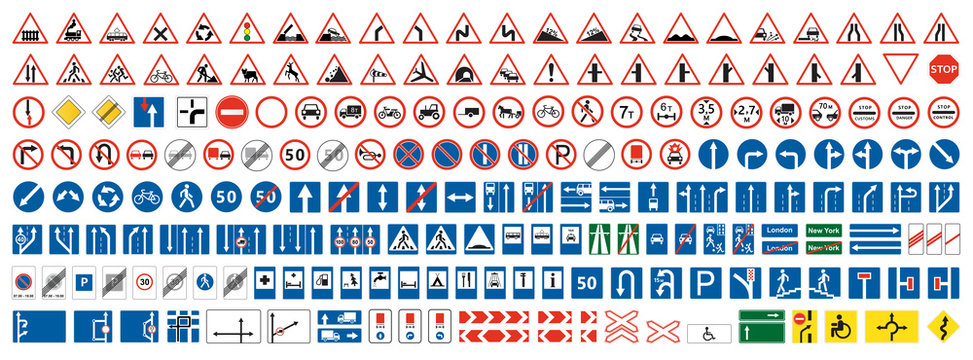
Road Markings and Their Colour
Road markings also play an important role in traffic management. Each colour and shape of line on the road has its significance:
- White Lines: Indicate movement in only one direction. They help separate traffic flows and prevent encroachment into oncoming lanes.
- Single White Line: This line should not be crossed except at junctions or when turning right. This restriction aims to minimise accidents on high-speed roads.
- Double White Line: This is a strictly prohibited marking that does not allow crossing the line. The only exception is in an emergency or when overtaking a vehicle moving at a very low speed, if permitted by local regulations.
- Yellow Hatching: Usually found along curbs and indicates a prohibition on parking and stopping vehicles during specific times. Violating this rule may result in a fine.
- White Give Way Markings: This frequently encountered line at junctions signals the driver to yield to other traffic before continuing. Additionally, white stop lines can be seen at pedestrian crossings and traffic lights, where drivers must stop to allow pedestrians to cross.
These signs and markings are essential components of road traffic and help drivers better navigate traffic conditions, ensuring safety and clear organisation of movement.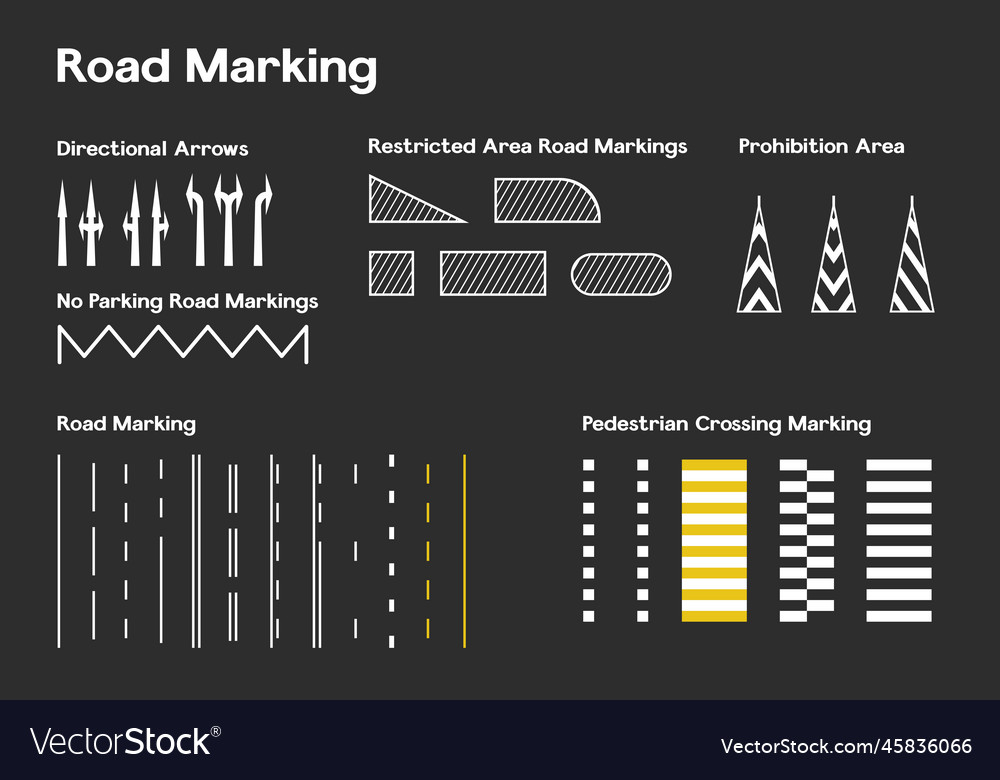
Priority Rules
Understanding traffic priority rules is a crucial aspect of safe driving. They help avoid collisions at intersections and narrow road sections where disagreements may arise between drivers. In the absence of road signs or markings indicating priority, the general rule applies: yield to vehicles coming from the right. This is called the "right-hand rule," and it should always be followed when there are no other indications. It is essential to be attentive and anticipate the actions of other road users.
At roundabouts, the situation is slightly different: vehicles already on the roundabout always have priority over those entering the junction. This helps organise traffic at such locations and avoid congestion. When yielding at roundabouts, it's important to remember to use turn signals so that other participants know your intentions.
Proper Lane Behavior
Lane discipline plays a key role in ensuring safety and smooth traffic flow on the roads. In the UK, drivers must stick to the left lane, except when overtaking or turning right. This is especially important on motorways and multi-lane roads, where proper lane distribution helps avoid accidents and congestion. Remember that the overtaking lane should be used only temporarily, and after completing the manoeuvre, you should return to the left lane.
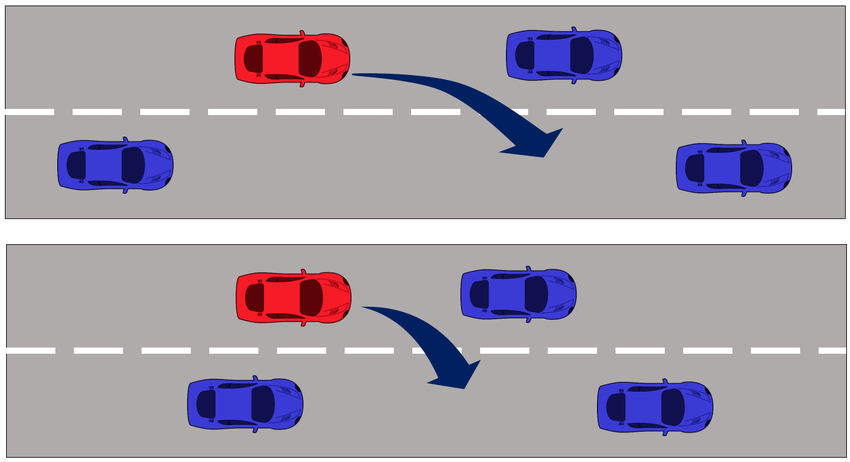
Before changing lanes, always ensure the manoeuvre is safe: check mirrors and blind spots. Blind spots are areas that are not visible in the car's side mirrors, so it is essential to turn your head and make sure no other vehicles are nearby. Additionally, follow road markings and signal your lane change using turn indicators to alert other drivers of your intention.
Traffic Lights and Other Signals
Traffic lights are one of the most common ways to regulate traffic on the roads. In the UK, the colour system is standard: a red light means a complete stop, a yellow light indicates preparation to stop, and a green light permits movement. However, there are additional signals and rules that drivers must consider.

For instance, a flashing yellow traffic light may indicate approaching a pedestrian crossing, where drivers need to be particularly vigilant and yield to pedestrians. Flashing hazard lights on parked or moving vehicles signal potential obstacles or manoeuvres requiring caution. Drivers should leave enough space for such vehicles to complete their manoeuvres safely.
Overtaking
Overtaking is one of the most dangerous manoeuvres on the road, so it must be approached with particular caution. Before beginning to overtake, ensure there are no obstacles ahead, and that there is enough space for a safe completion of the manoeuvre. For this, check not only the front of the road but also the rear using mirrors and blind spots.
Before overtaking, be sure to signal to other road users using your turn indicators to inform them of your intention. Remember that overtaking in the UK is done on the left, and you should keep to the left side of the road during the manoeuvre. Overtaking is prohibited on bends, hills, or in conditions of limited visibility. Violating this rule can lead to serious accidents, as oncoming traffic may not have time to react to your actions.
Avoid overtaking near pedestrian crossings or before intersections, where traffic becomes less predictable. Overtaking should be completed as quickly as possible to minimise time spent in the oncoming traffic lane. After overtaking, return to your lane while maintaining distance from other road users.
Common Challenges for New Drivers
Roundabouts can be challenging for novice drivers, but with the right knowledge and practice, they can be navigated safely. Always reduce speed and check for traffic behind. Use your left turn signal when entering, and also use the left lane for exiting. Upon exiting, signal right.
Priority is given to vehicles moving from the right. Always yield to emergency vehicles regardless of their direction. You should pull over to the side or move close to the barrier.
Parking Rules
Parking should only be done in designated areas and zones where allowed by traffic rules. The UK has a strict system of marking parking zones to avoid chaos on the roads. For example, double yellow lines along the curbs indicate a complete prohibition on stopping and parking, regardless of the time of day, unless there are additional signs. Stopping or parking on these lines is strictly prohibited. Single yellow lines allow stopping for a limited time, and there are often signs indicating permitted time intervals for parking.
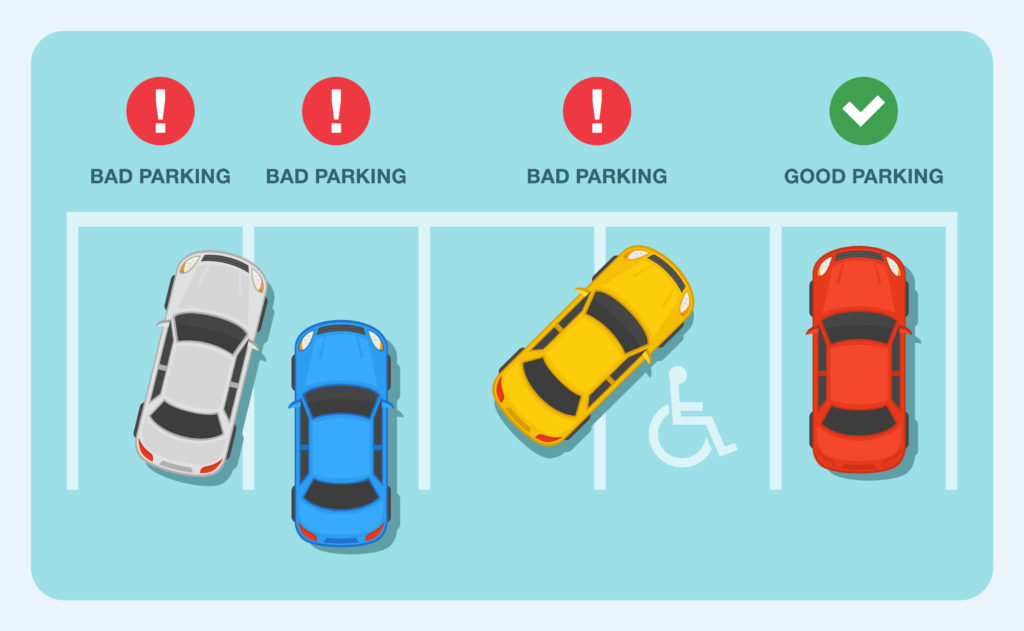
In residential areas, parking is often permitted only with a special permit. This is because such areas are usually crowded with local residents' cars, and available spaces can be limited. Parking permits must be obtained from local authorities or other relevant institutions. There are particularly strict regulations regarding parking in spaces designated for individuals with disabilities. Such spots are marked, and parking there is allowed only with the appropriate sign on the vehicle.
Parallel parking, especially in urban conditions, requires special skills. To execute this manoeuvre correctly, it is recommended to choose a space that is at least one and a half times longer than your car. This allows for safe and comfortable manoeuvring. Always signal before starting to park and check blind spots to ensure you are not obstructing other road users. Entering the parking space in reverse is preferable, allowing for more accurate placement of the vehicle along the curb.
It is prohibited to park on sidewalks, verges, bike lanes, bus stops, and in front of driveways. Such actions can lead to fines and even the towing of the vehicle. Additionally, they pose a safety risk to other road users, such as pedestrians and cyclists. Always pay attention to signs and markings to avoid trouble.
Driving in Bad Weather
Driving in poor weather conditions requires special attention and preparation. Weather conditions can significantly affect visibility, tire grip on the road, and the vehicle's response to manoeuvres. The first and most important step is to reduce speed. The worse the road conditions, the slower the vehicle should move, allowing the driver to react promptly to any unexpected situations. It is also advisable to increase the distance between vehicles. This is necessary to avoid accidents in case of sudden braking.
In winter or during rain, roads become slippery, so it's best to avoid abrupt braking or acceleration. These actions can lead to skidding or losing control of the vehicle. Instead, it is recommended to gently press the pedals and move steadily. In foggy conditions, using fog lights and wipers helps improve visibility. Additionally, during snow or rain, it is essential to ensure that the tires are in good condition and suitable for winter use, and that the brakes are functioning properly. Brake checks should be conducted regularly, especially before the winter season.
In heavy rain or snowfall, it's important to watch the road surface and avoid large puddles that may conceal potholes or other obstacles. Be aware of potential snow drifts on the roads, which can appear unexpectedly, especially in rural areas. In such conditions, it is crucial to stay focused and avoid distractions.
Night Driving
Night driving requires additional caution and preparation, as visibility significantly decreases. The first rule of night driving is to reduce speed. At night, objects and obstacles on the road become less noticeable, and to have time to react to any sudden changes, one must drive more slowly.
Using headlights is mandatory. High beams should be used on unlit roads; however, they must be switched to low beams if an oncoming vehicle approaches, to avoid dazzling its driver. When approaching pedestrian crossings or intersections, reduce speed further and pay close attention to signs and traffic lights. Remember that at night, pedestrians and cyclists may be less visible, so always be ready for unexpected situations on the road.
Additionally, at night, pay attention to the condition of mirrors and the windshield to avoid glare from oncoming headlights. Using hazard lights or signalling with other vehicles can also indicate potential dangers on the road, such as stopped cars or obstacles.
Preparation for the Driving Test
The driving test consists of two stages: a theory test and a practical one.
The theory test has 50 questions and 14 clips for hazard perception. It lasts a total of 57 minutes. Theory questions cover topics such as traffic signs, rules, and safety.
Hazard perception clips are completed by clicking the mouse. While watching the videos, you need to click when approaching hazards. The situations are fully modelled based on traffic.
To pass, you need to answer at least 43 questions correctly in a multiple-choice test, and score at least 44 points on the hazard perception test.
The practical test lasts 40 minutes, during which driving skills, knowledge of rules, and manoeuvres are checked. Then, during the remaining time, the instructor allows you to drive independently using satellite navigation. This time allows assessing how the driver perceives distances and understands traffic signs. Passing is counted if there are fewer than 15 errors.
Common Driver Mistakes
Common mistakes made by drivers, especially beginners, often relate to a lack of attention and insufficient skills in observing the situation on the road through mirrors. Many novices do not pay enough attention to the mirrors, only glancing at them occasionally. However, constant monitoring of the mirrors is vital for understanding the surroundings of the vehicle, especially during lane changes, overtaking, or turns. Neglecting mirrors can lead to dangerous situations where the driver fails to notice approaching vehicles from behind or the side, increasing the risk of accidents.
Another frequent mistake is misaligning speed with road conditions or not knowing how to properly operate pedals and controls. Many beginners tend to either accelerate excessively or move too slowly, creating hazardous situations on the road. Understanding when to slow down or speed up is a key skill that develops with experience. There is also often a problem with using pedals correctly, especially among drivers who are just beginning to familiarise themselves with manual transmissions. This can result in incorrect gear shifting or braking, affecting safety.
One common error is improper positioning on the road. Many new drivers struggle with choosing the correct lane, especially on multi-lane roads. They may remain in the far left lane, designated for slower traffic, even if their speed does not correspond to this. Improper lane distribution creates inconveniences for other drivers and can lead to accidents. It is also necessary to be attentive to road markings and traffic signals.
Another critical mistake is a lack of awareness regarding priority rules at intersections or roundabouts. New drivers sometimes do not yield to vehicles coming from the right or entering the roundabout, which can lead to serious accidents. Familiarity with the priority rules is crucial for safe driving, as they help maintain order on the road.
Safe Driving Principles
Safe driving principles include attentiveness, anticipation, and adherence to traffic rules. Attentiveness is crucial to monitor traffic situations around the vehicle, including pedestrians, cyclists, and other vehicles. Always be aware of what is happening in front of you and behind you, and be prepared to react to unexpected situations.
Anticipation means predicting the actions of other road users based on their behaviour and the road situation. For example, if you notice a pedestrian waiting to cross the street, slow down and prepare to yield. Being able to foresee potential dangers will help you avoid accidents.
Adhering to traffic rules is fundamental for safe driving. This includes obeying speed limits, yielding when necessary, and using turn signals to indicate your intentions to other road users. Compliance with these rules not only ensures your safety but also contributes to the overall safety of all participants in the road process.
Preparation Tips
Effective Preparation for the Driving Test
Effective preparation for the driving test requires thorough study of traffic rules, practical driving skill practice, and the development of a strategy for the exam itself. Start by studying the Highway Code, paying special attention to sections related to specific situations on UK roads, such as priority rules, road signs, and speed limits. It is advisable to use official materials provided on the Driver and Vehicle Standards Agency (DVSA) website, which will help you familiarise yourself with the rules and requirements of the exam.
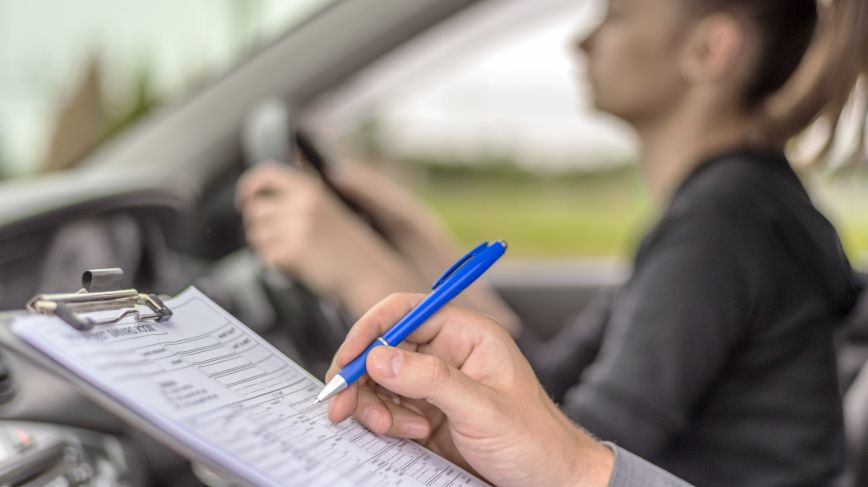
Once you have studied the theory, it is essential to regularly practise the knowledge gained, using tests to reinforce the material. Frequent repetition will help you better remember the rules and confidently answer questions. Driving lessons with an experienced instructor play a key role in your preparation, as the instructor will help you not only learn how to drive a car but also adapt to the peculiarities of traffic in the UK. Practising in real road conditions will enable you to better understand the rules, learn how to manoeuvre properly, and maintain a safe following distance.
Practice Tests
Practising with mock tests is an important component of preparing for the driving exam, as it helps you get used to the structure of the test, identify weaknesses in your knowledge, and build confidence. Mock tests allow you to answer multiple-choice questions, helping you get familiar with the exam format and avoid surprises during the actual test. Moreover, mock tests include scenarios of risky situations on the road, which helps you assess your theoretical preparation and develop decision-making skills in challenging conditions.
Regular practice using official DVSA materials also helps you learn to work with a timer, which is crucial during the exam. The tests include various situations you need to assess and quickly provide the correct answer, helping to develop your reaction speed and ability to act correctly in stressful situations.
Road Safety
Defensive driving is crucial for ensuring safety on the road. It involves not only being aware of the surrounding environment but also actively anticipating potential hazards. It is important to not only notice but also predict the actions of other road users, such as pedestrians and cyclists. Constant attention to road conditions allows you to respond in a timely manner to changes, such as the appearance of new participants or changes in road conditions. Using mirrors to check blind spots and maintaining a safe following distance helps reduce the risk of collisions.
It is also helpful to know basic vehicle maintenance procedures and to act appropriately in emergencies. Regular checks of the vehicle's condition, such as oil levels, tire pressure, and brake functionality, can prevent breakdowns on the road. An emergency kit should always be in the car, including a first aid kit, a warning triangle, a reflective vest, and a flashlight. This will help you be prepared for various situations, such as an accident or breakdown, and ensure your safety on the road.
Dealing with Aggressive Drivers
Encountering aggressive drivers can be unpleasant and stressful, but it is important to remain calm and avoid escalating the conflict. Do not give in to provocation: responding to gestures or shouting can worsen the situation. Instead, focus on safe driving and maintaining distance. If you become a victim of aggressive behaviour, try to remember the vehicle's licence plate number, colour, and make, as well as the driver's characteristics. This can be useful if you decide to contact the police. Recording details about the opponent's vehicle and the time of the incident will help ensure legal protection later.

Avoiding Distractions
Distractions can significantly impair your ability to drive safely. It is important to minimise the use of mobile phones while driving, even if they are in a special holder. If you need to answer a call or message, it is better to pull over to a safe place. Keep the volume at a reasonable level in the cabin so you can hear road signals and noises that may warn you of potential hazards. Communication with passengers should also be limited to avoid distractions from observing the road and other traffic participants. Creating a comfortable and safe atmosphere in the car will help you focus on driving and reduce the risk of accidents.
Conclusion
Studying the Highway Code and mastering driving skills are crucial steps towards safe and confident driving. New drivers should remember that knowledge of traffic rules is the foundation of safe driving. It is essential to study all aspects of the Highway Code in detail, including signs, traffic signals, overtaking rules, and parking regulations. This will help you avoid fines and accidents, as well as strengthen your confidence behind the wheel.
For new drivers in the UK, it is especially important to pay attention to the peculiarities of traffic, as the country has its unique rules and habits. For example, driving is on the left side of the road, which may take time to get used to. Additionally, you must consider various driving conditions, such as dense urban traffic, one-way streets, and roundabouts. Participating in driving lessons with an experienced instructor can significantly speed up the adaptation process and improve safety levels.
It is also important to remember the requirements for obtaining a driving licence. Preparing for the exam includes not only theoretical knowledge but also practical skills. Successfully performing manoeuvres such as parallel parking and navigating roundabouts is an integral part of the exam. Focusing on every aspect of driving will help you not only pass the exam but also become a safe driver in the future.
Following traffic rules not only ensures safety but also makes driving more comfortable and enjoyable for all road users. When all drivers adhere to the rules, it reduces the likelihood of conflict situations and road incidents. Moreover, attentive and respectful behaviour towards other road participants creates a positive atmosphere on the road, contributing to an overall improvement in road conditions. Ultimately, knowledge and adherence to traffic rules are the keys to safe and successful driving.
Rate the article











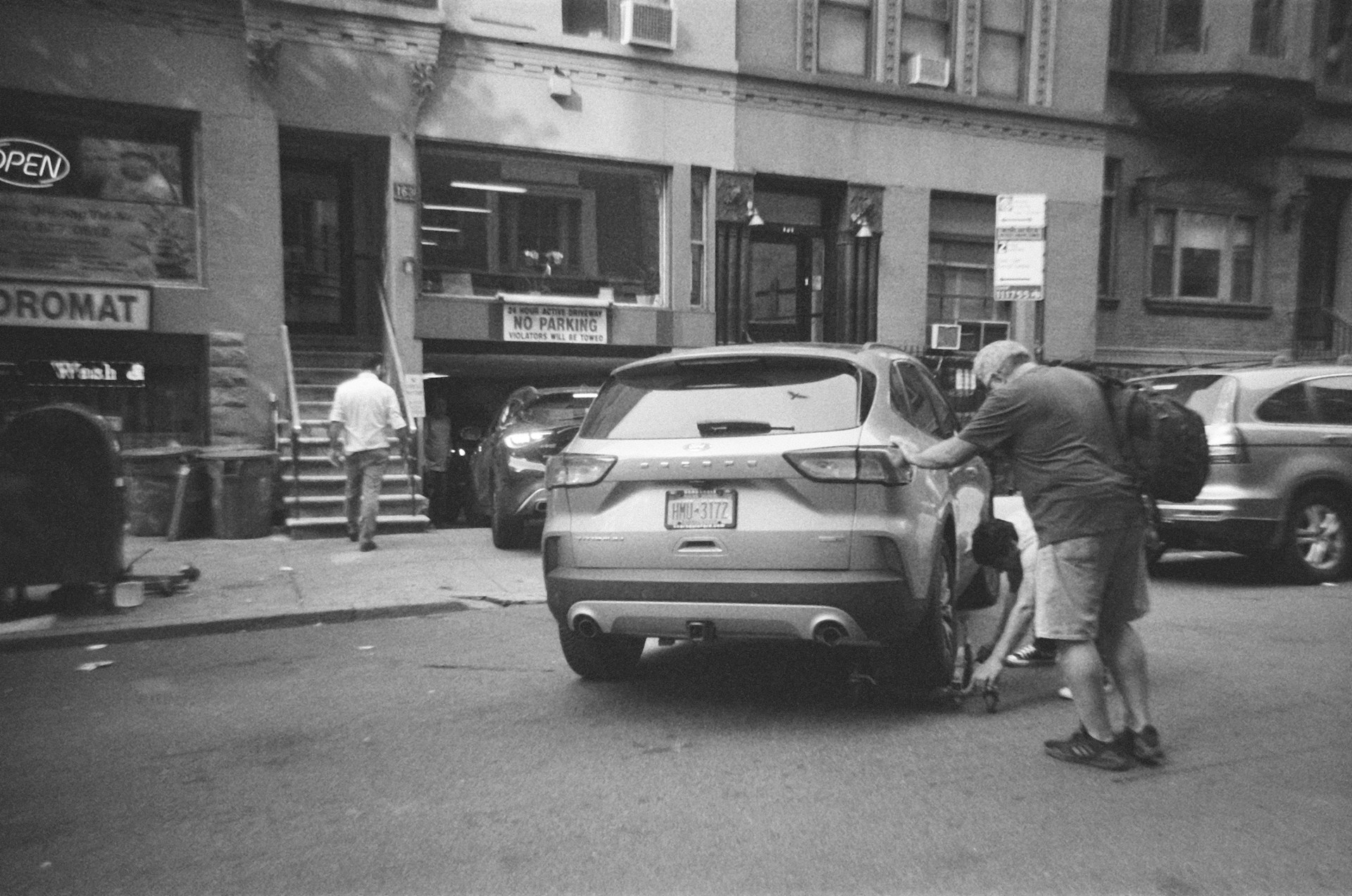

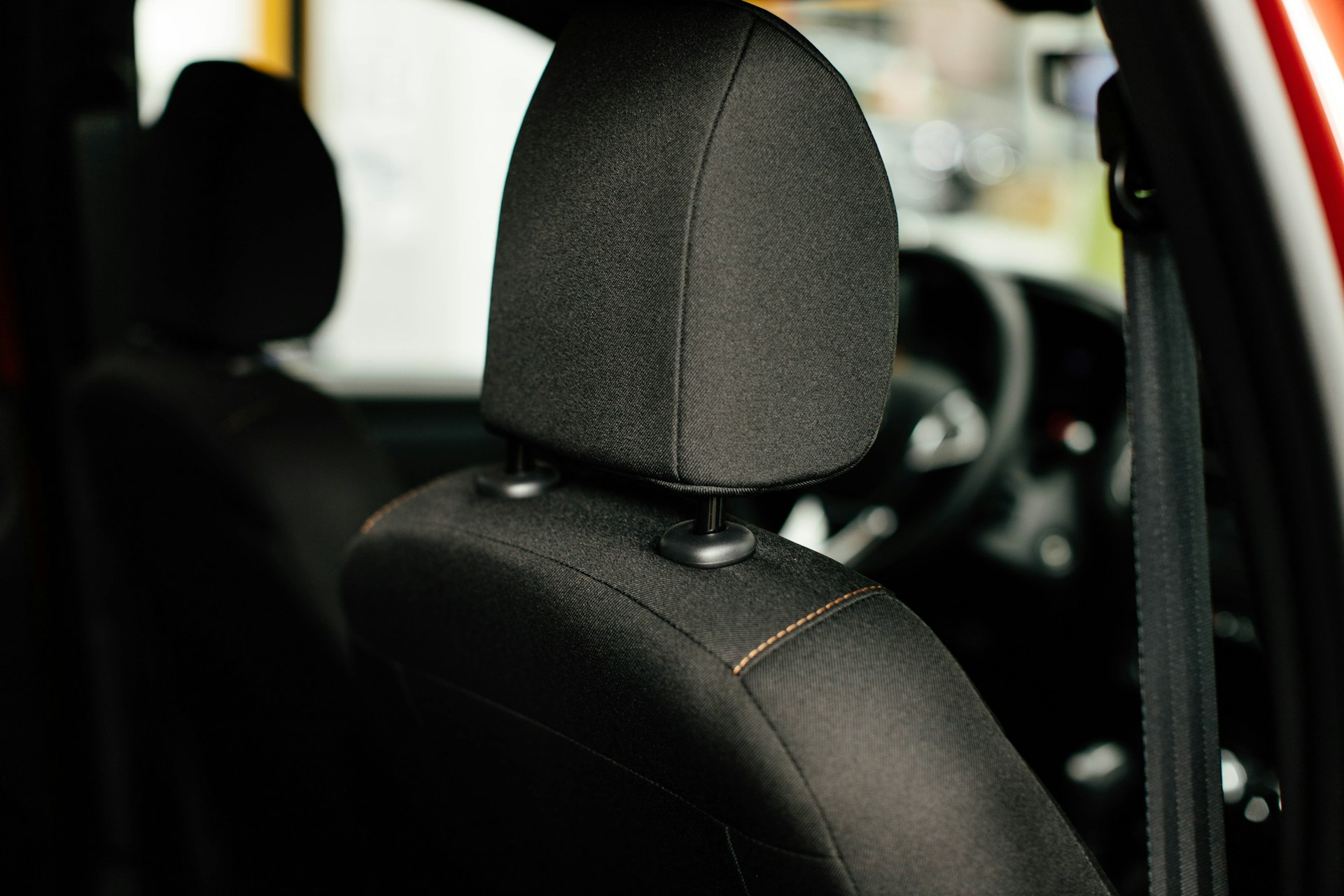


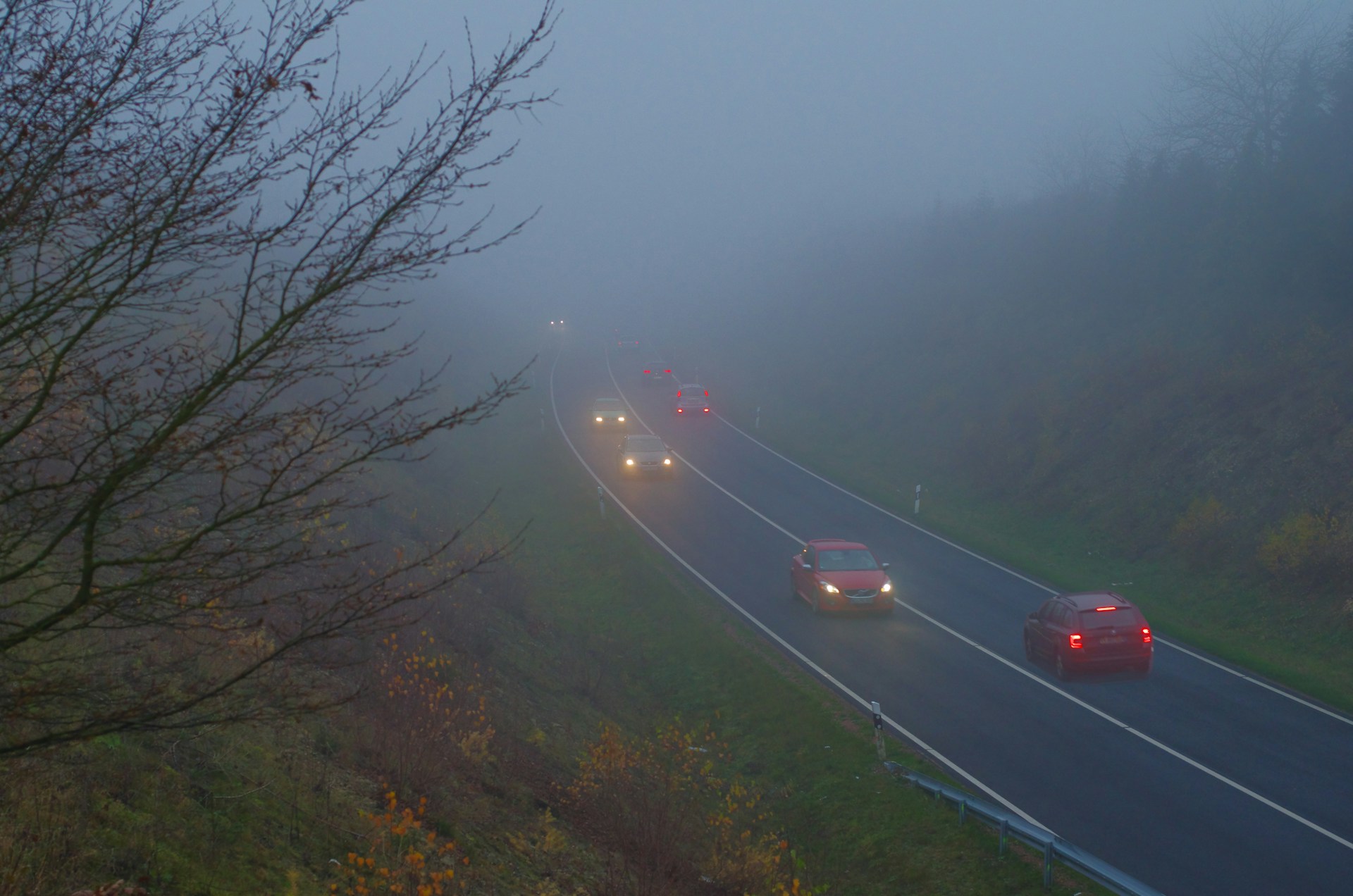
















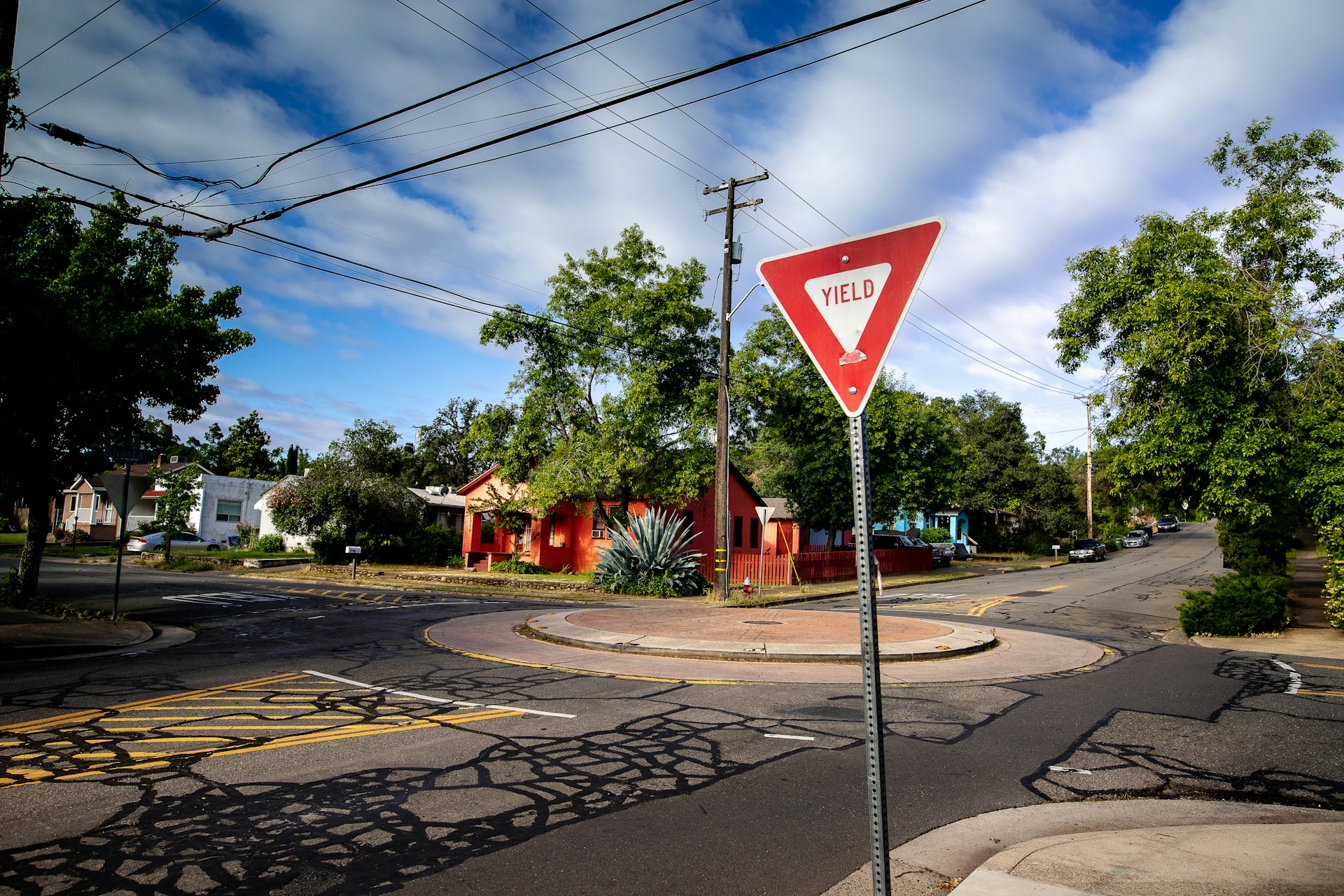









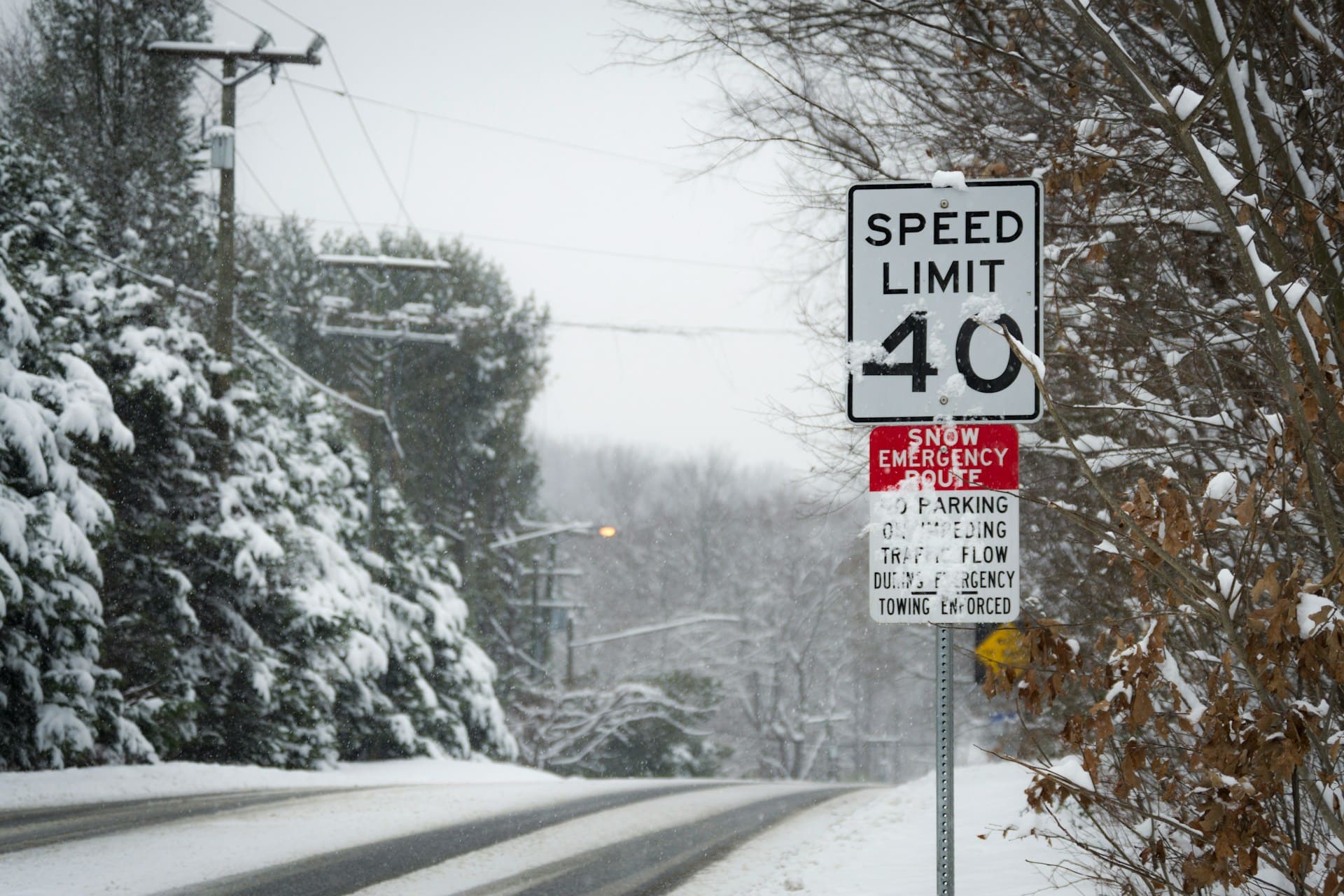


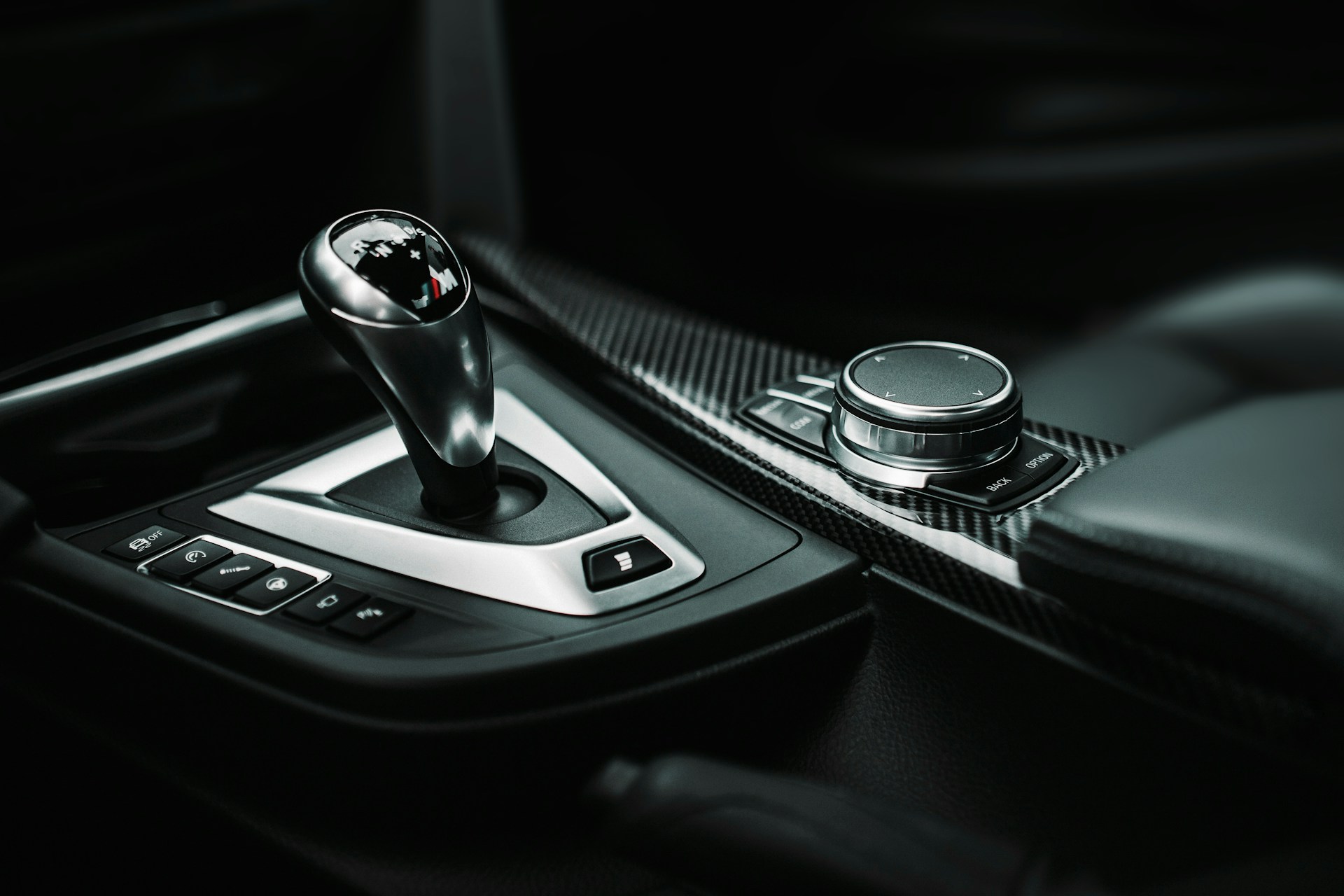














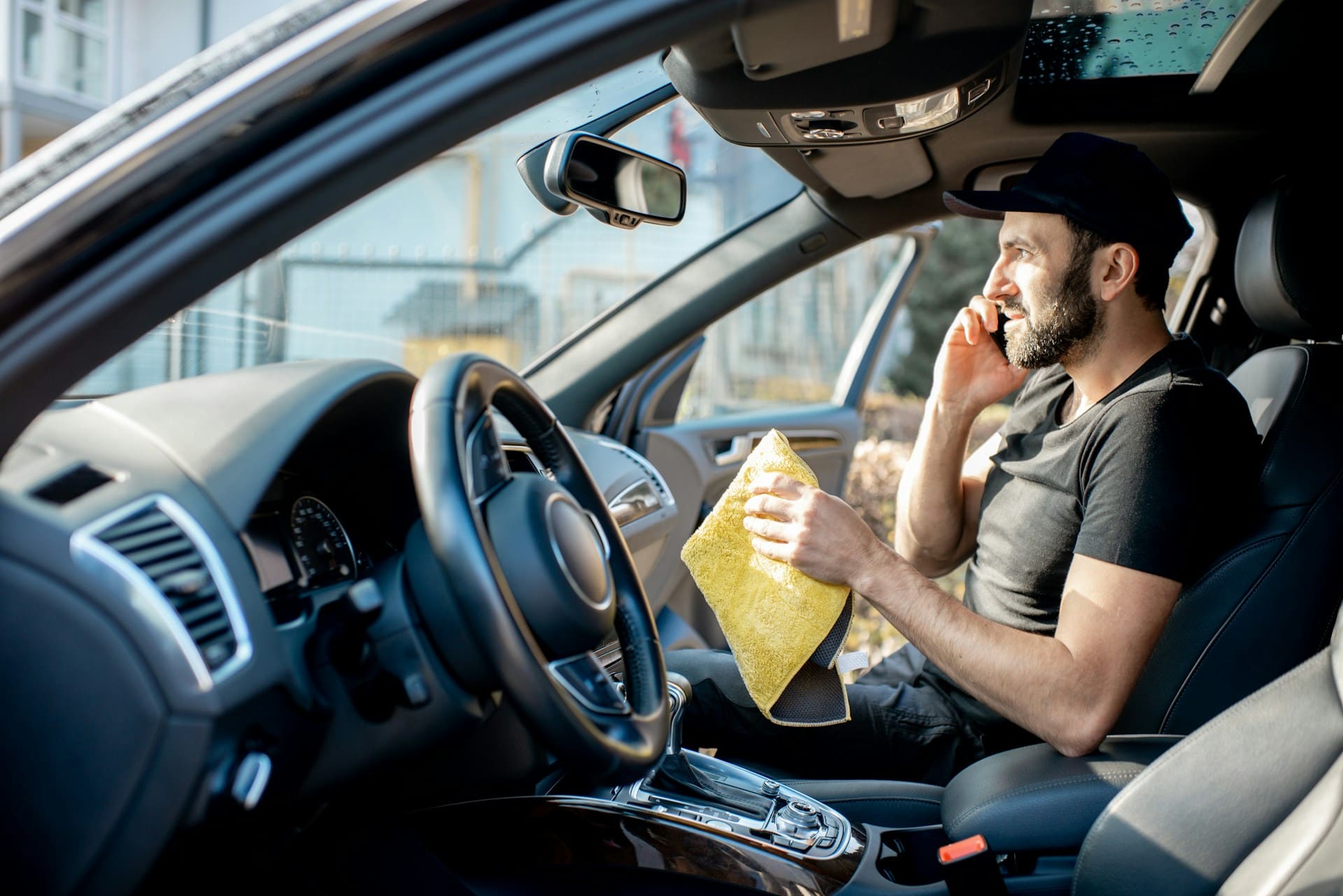








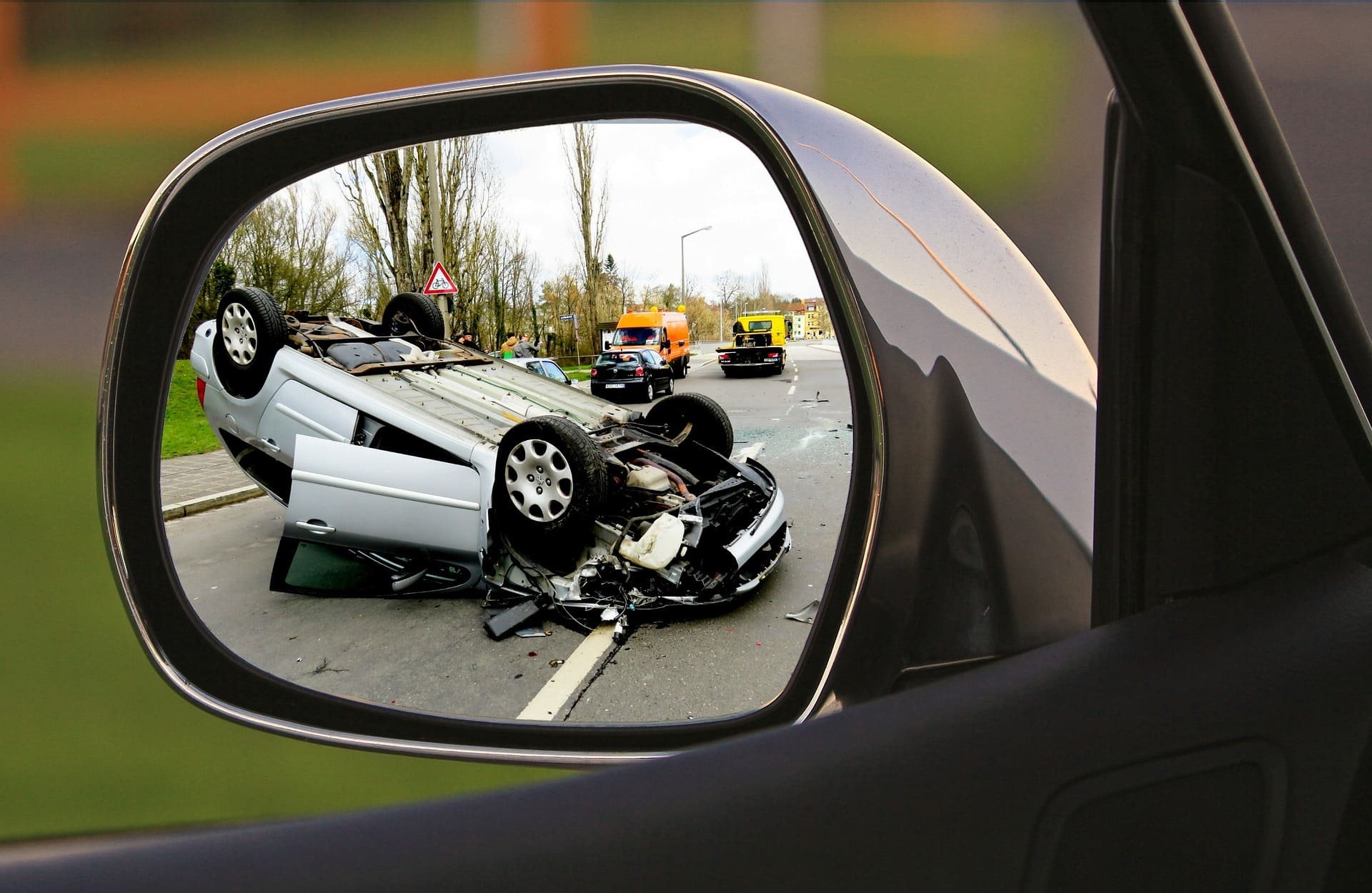










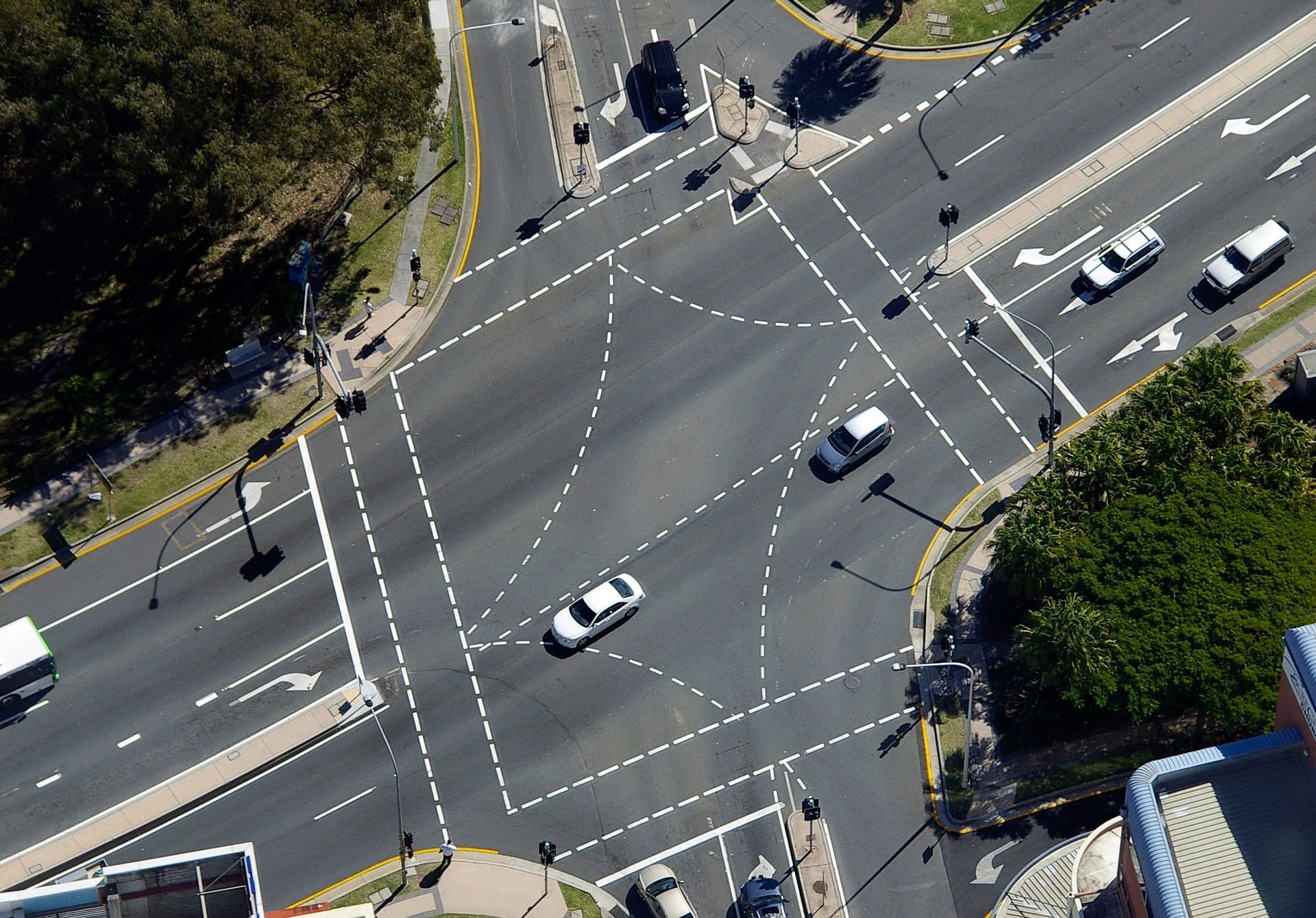
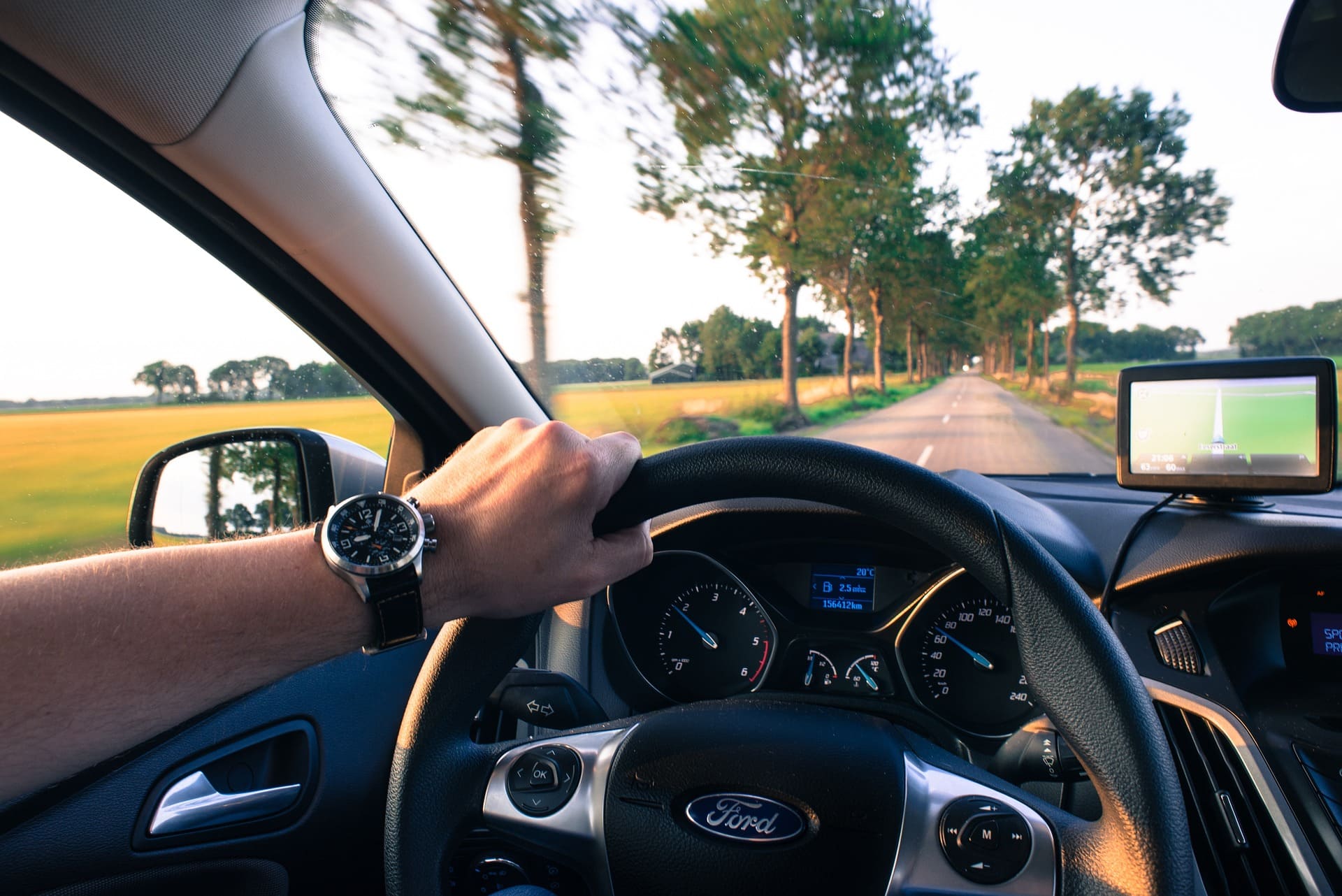













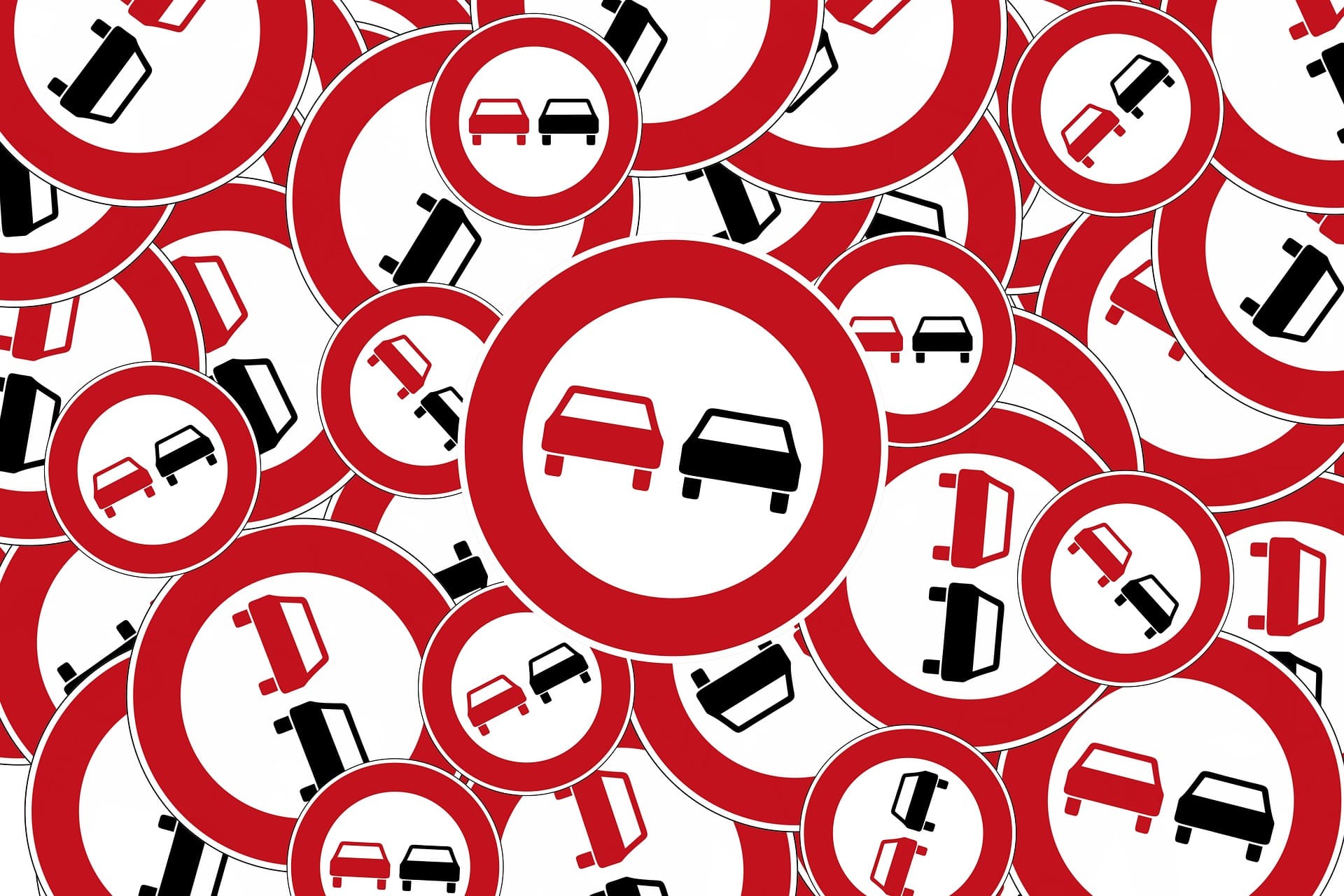
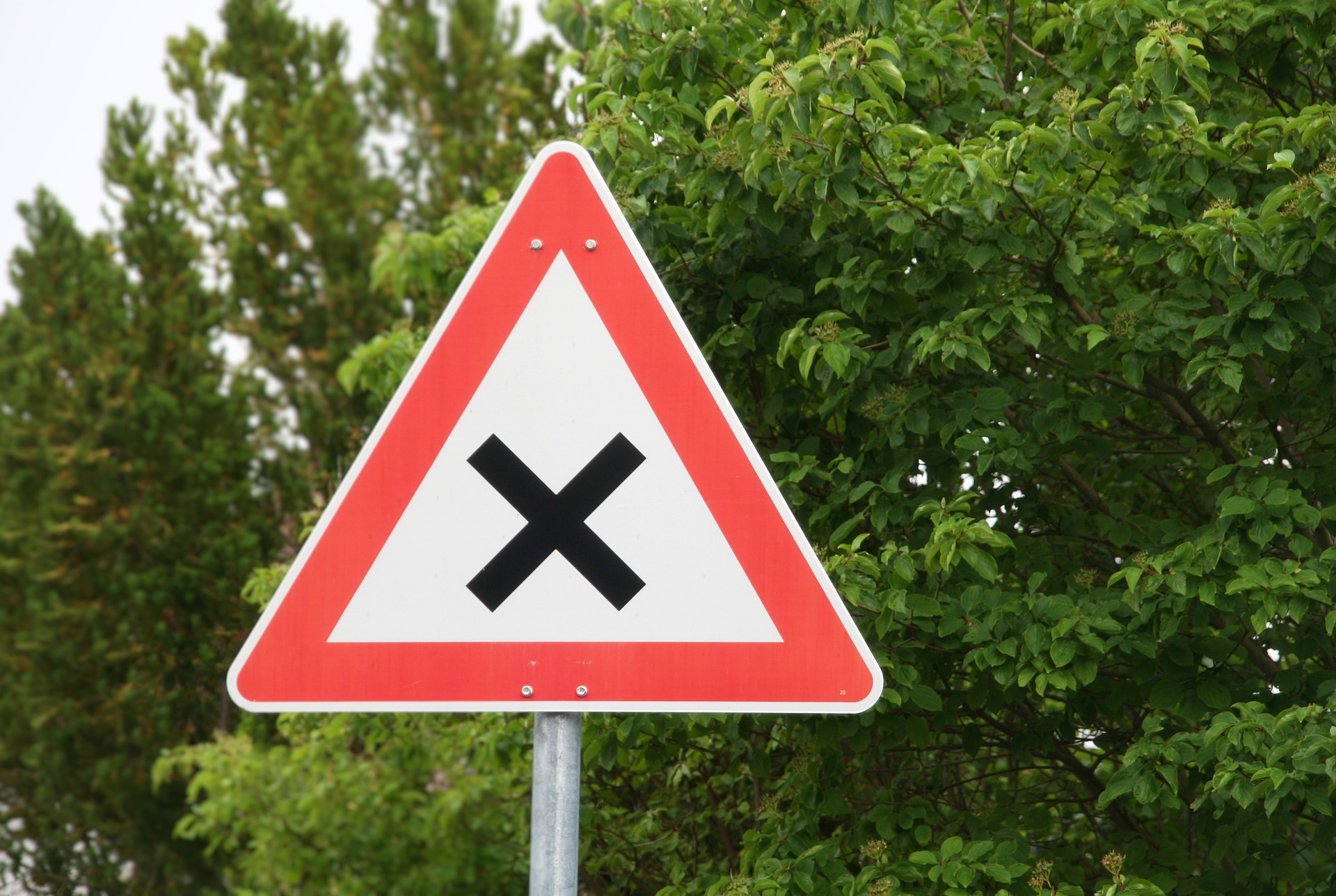




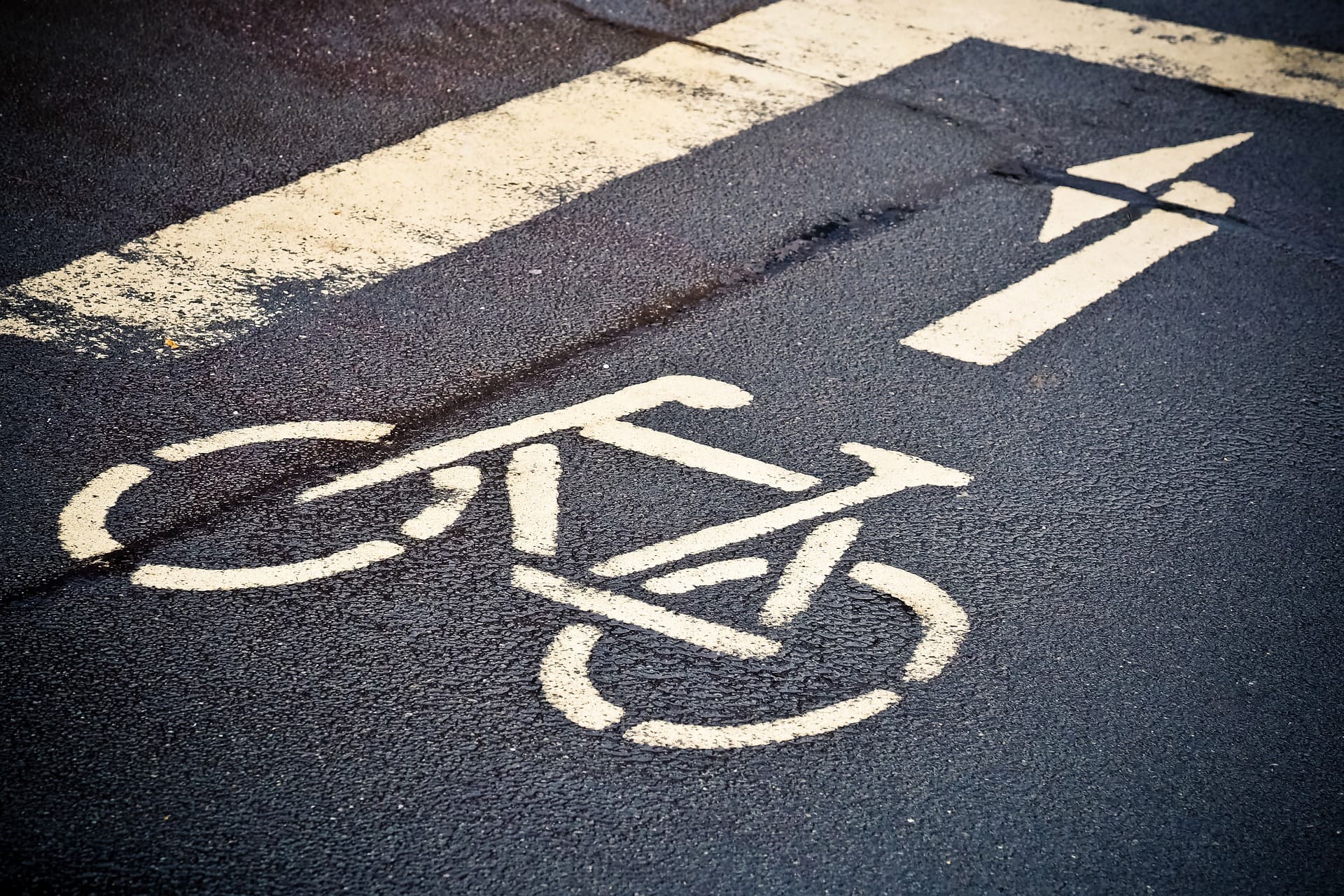

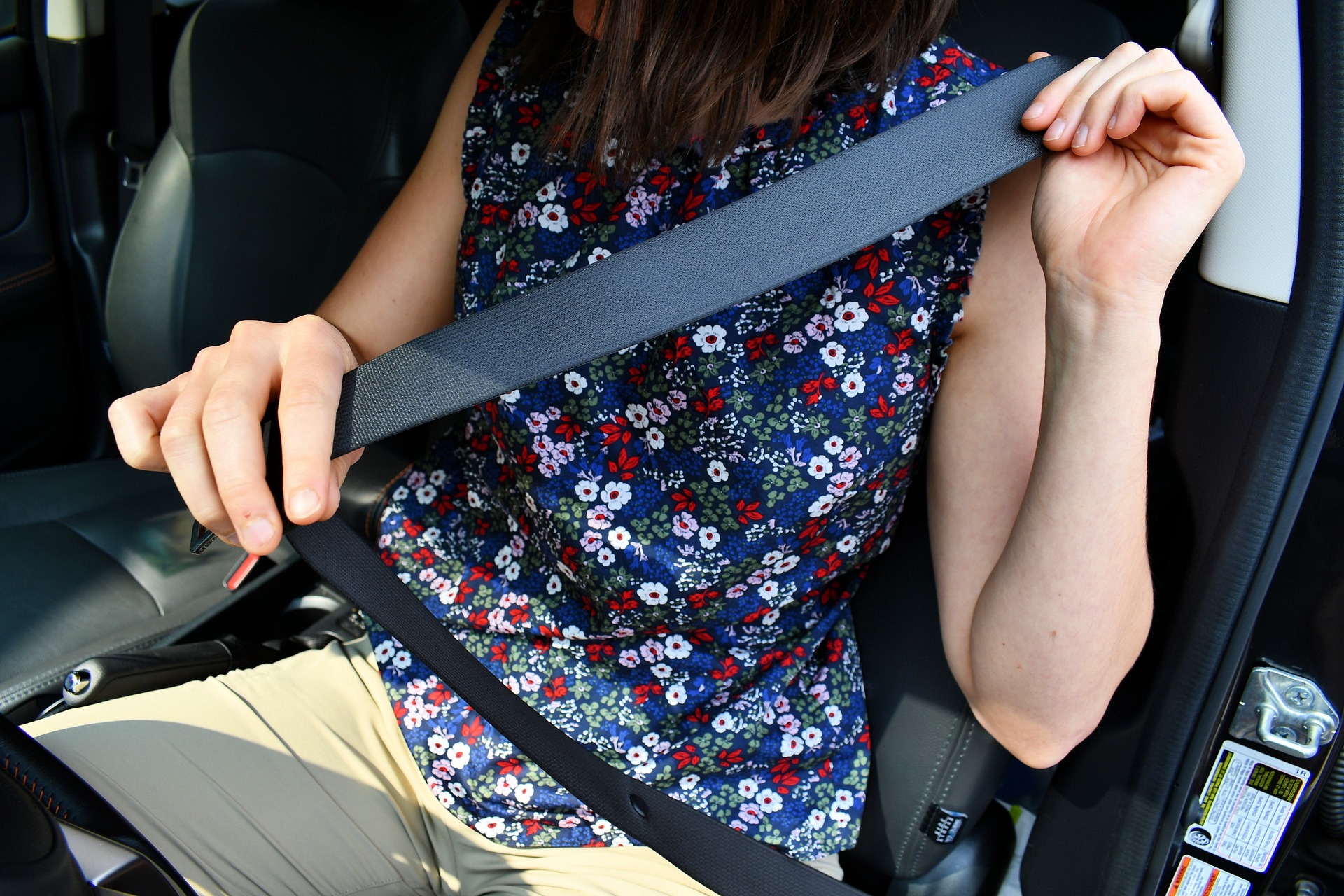
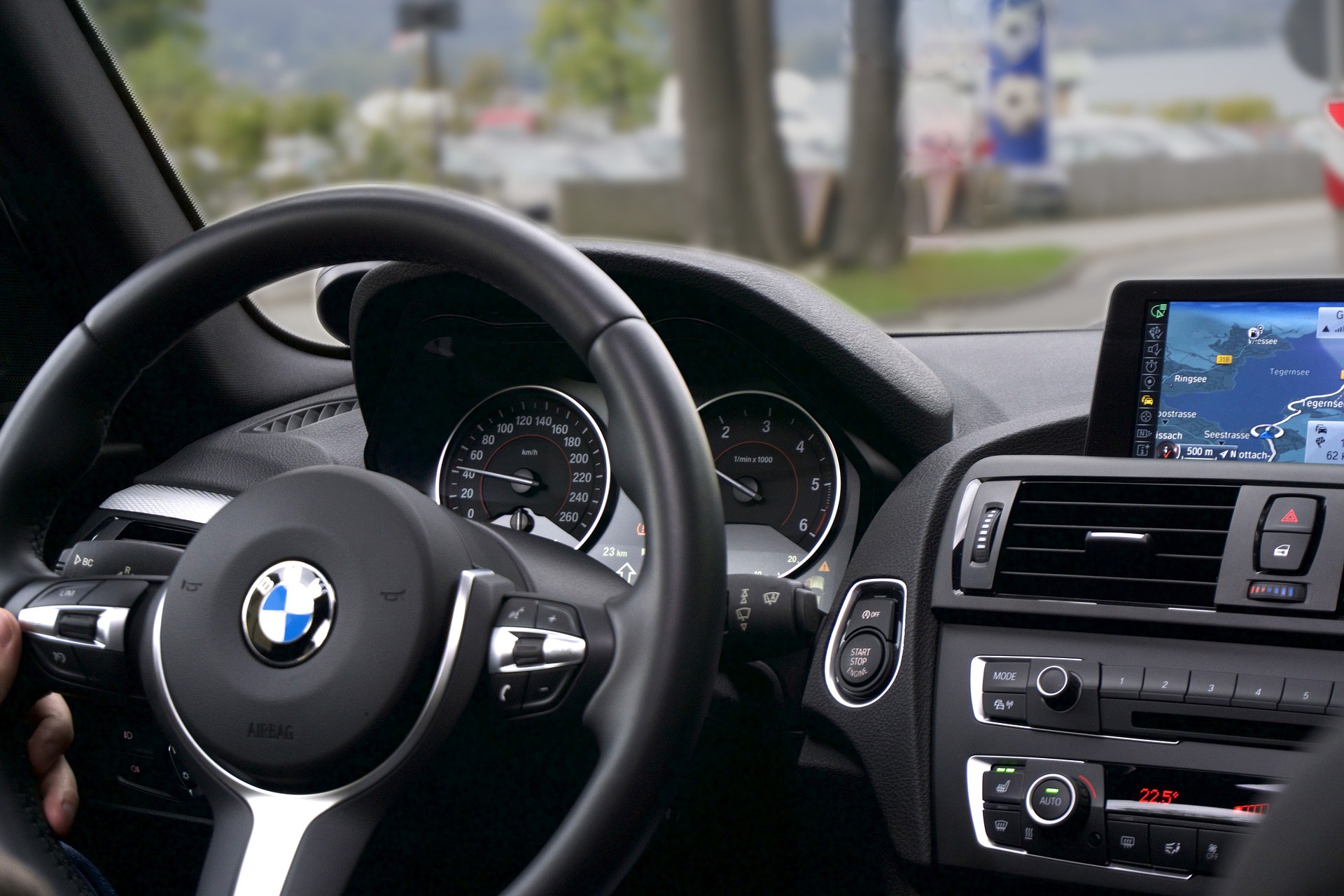





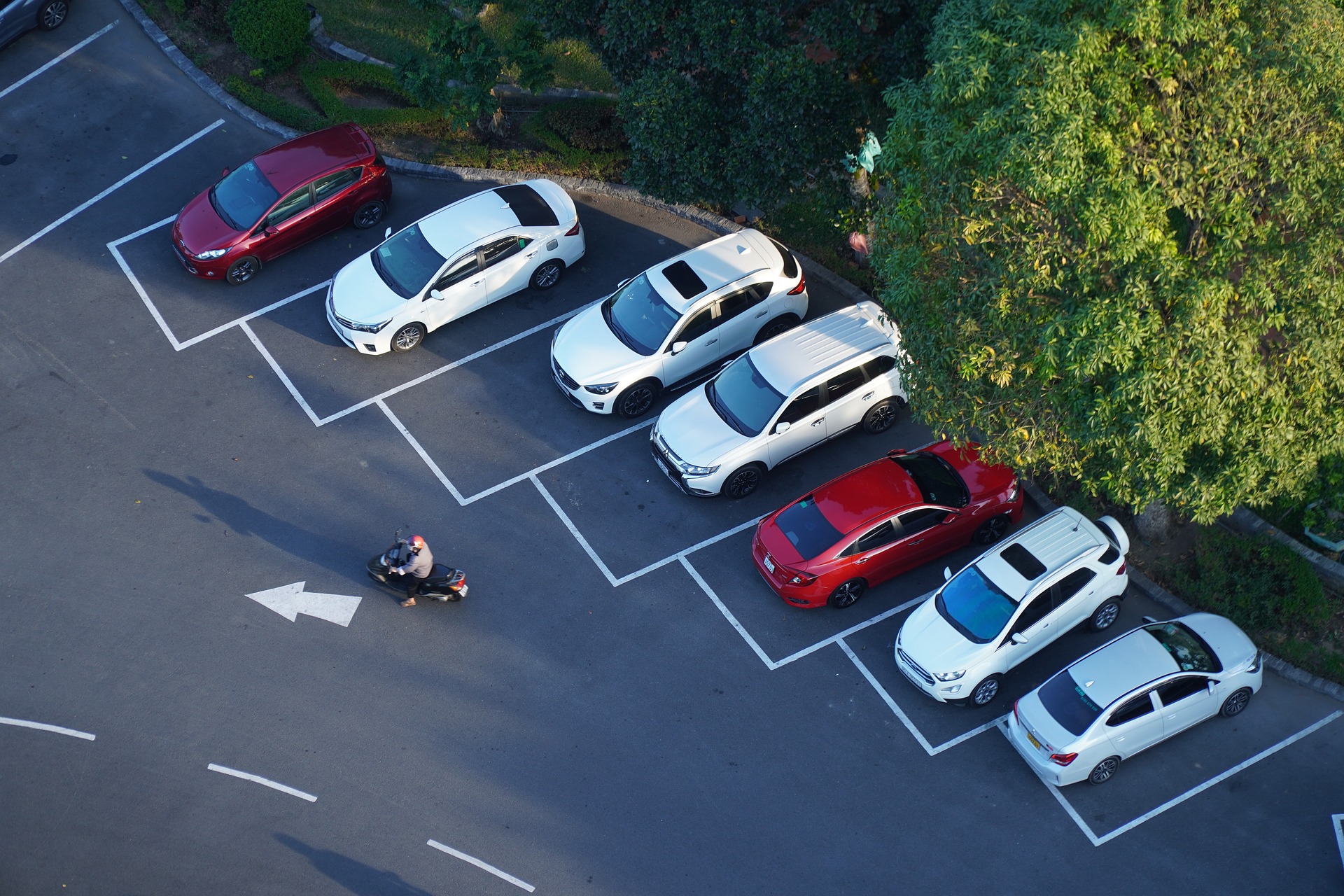
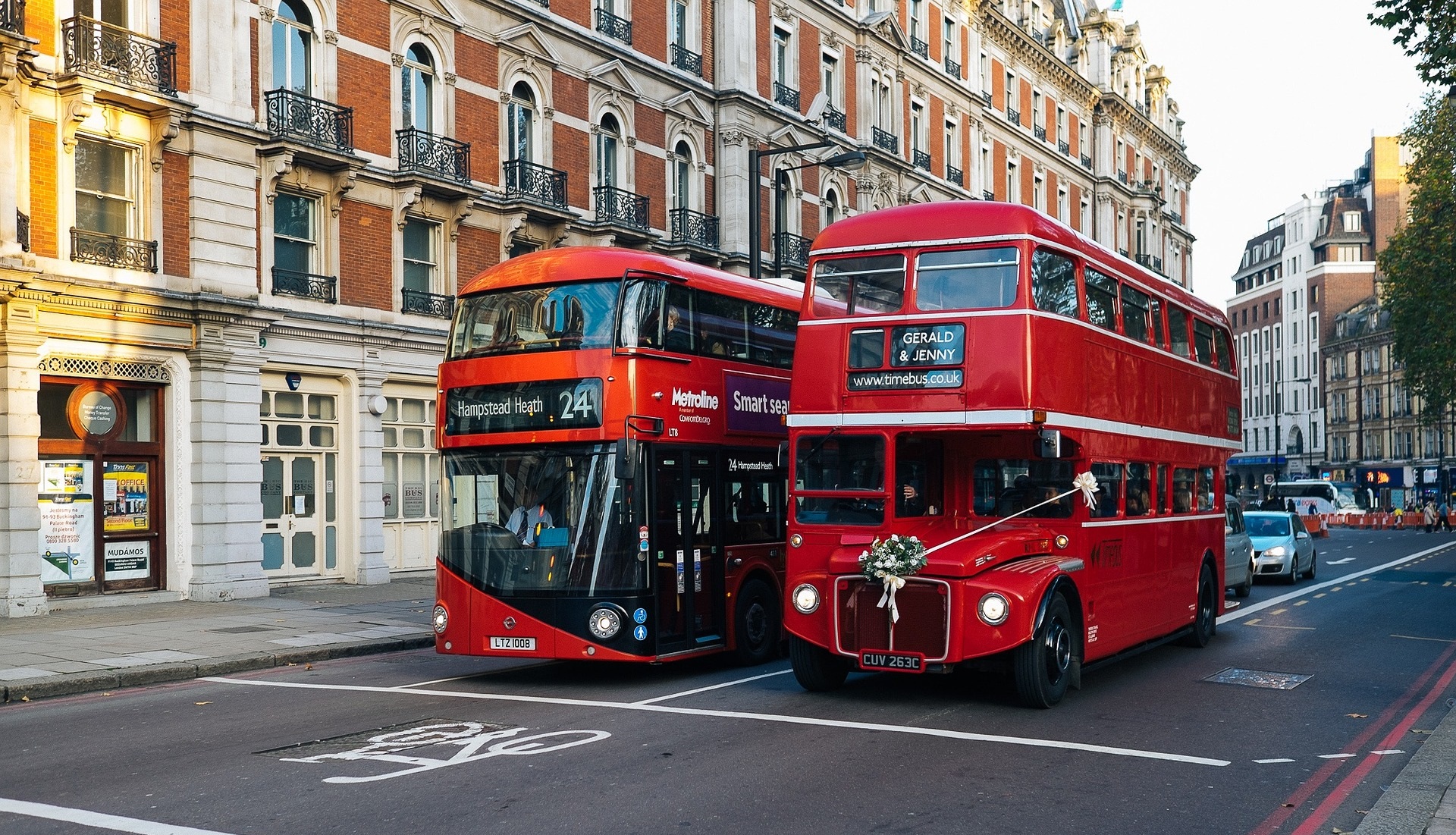

















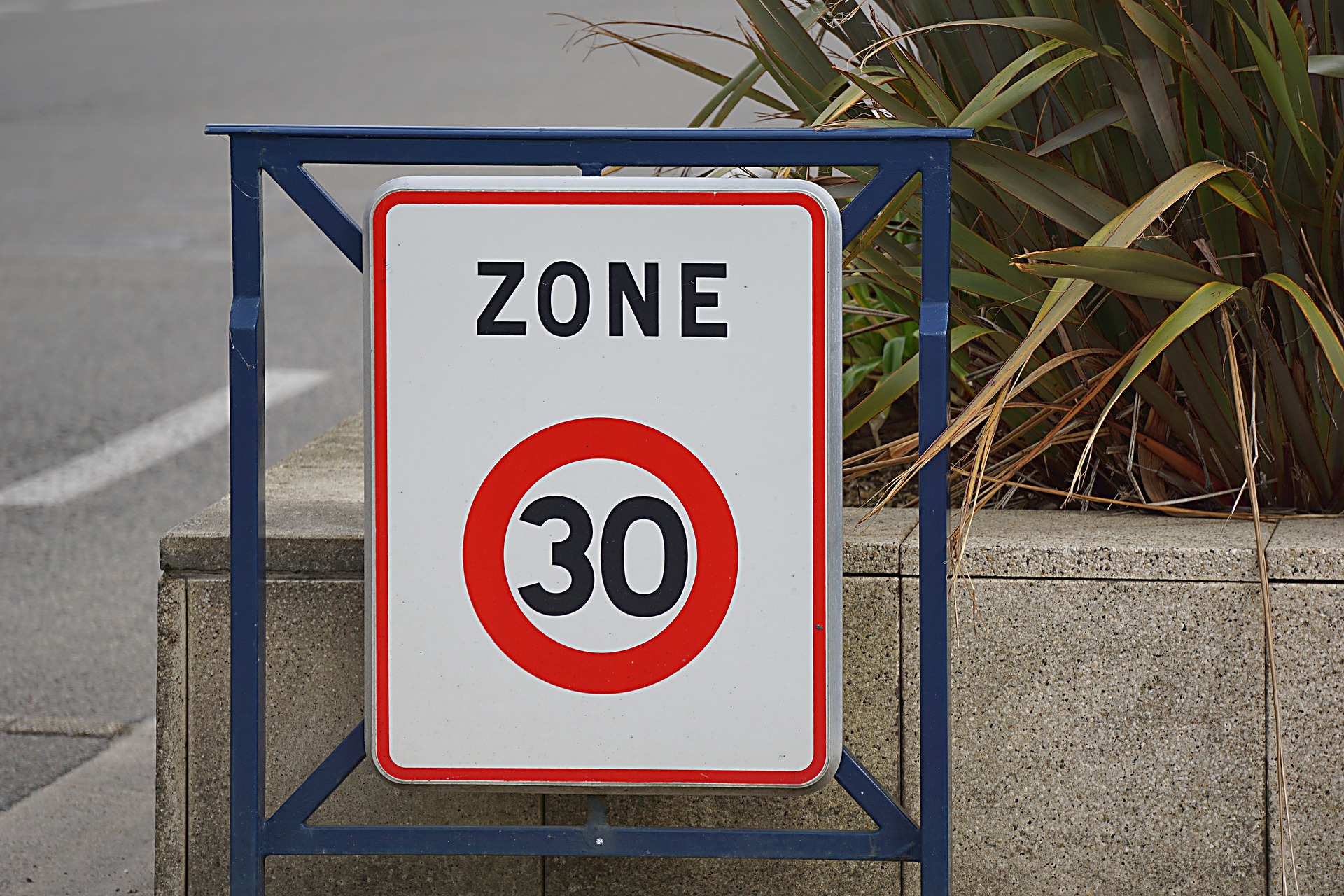
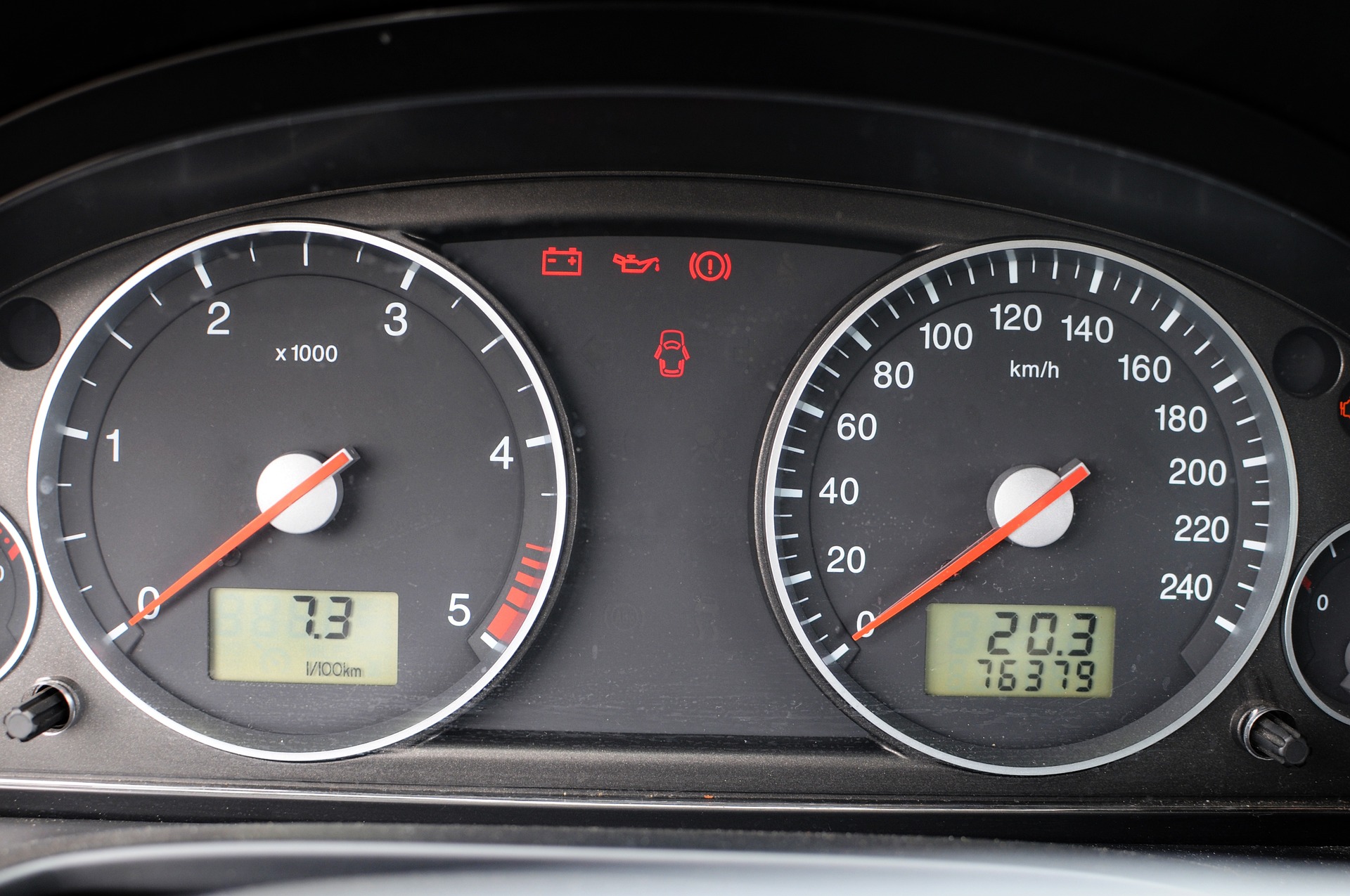



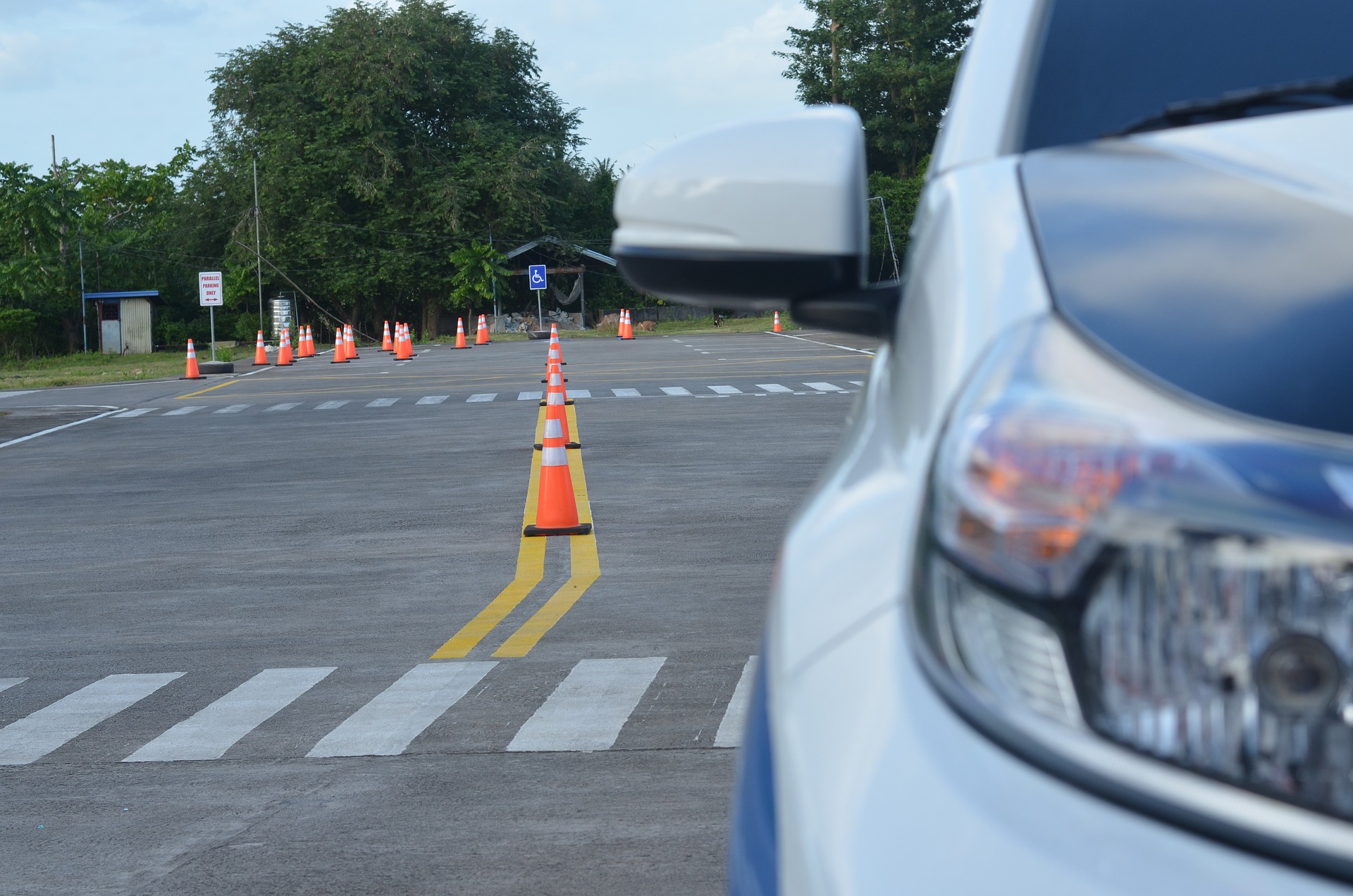








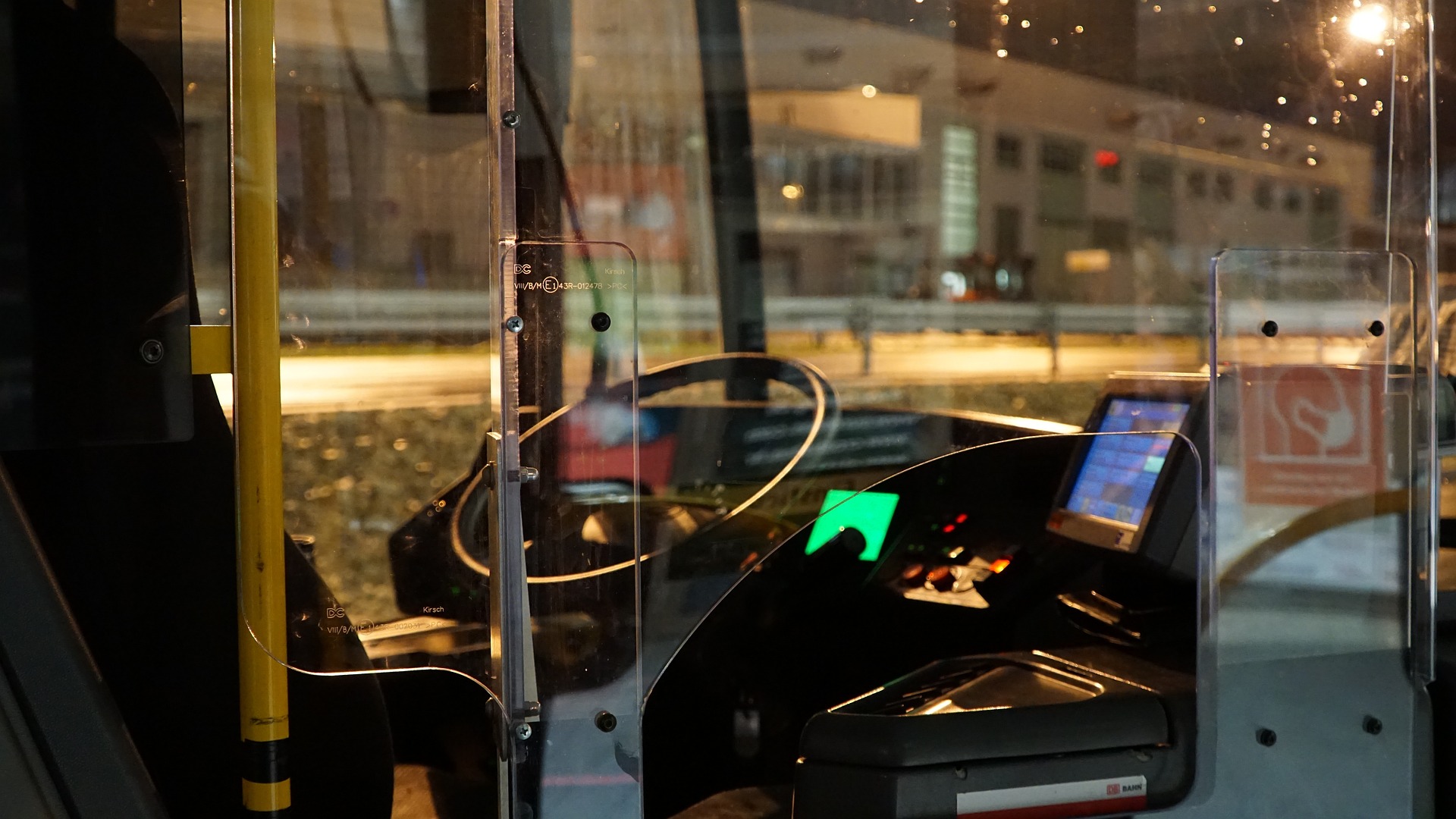


Comments